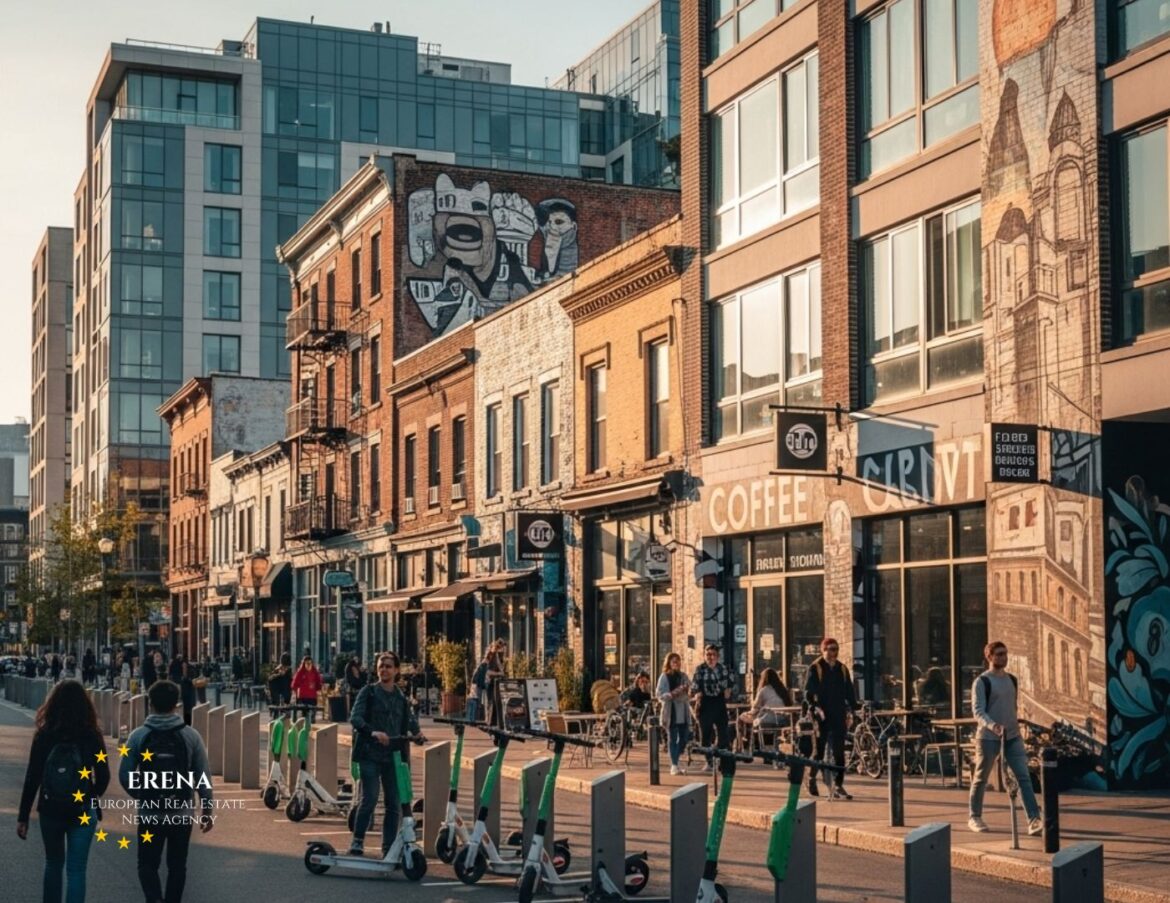In the ever-evolving European real estate market, investors are increasingly drawn to neighborhoods with strong growth potential. These areas haven’t yet peaked in price but are already showing early signs of transformation — from infrastructure upgrades to rising interest from renters and developers. Accurately identifying such locations can offer significant returns with relatively modest upfront investment.
What Is an Up-and-Coming Neighborhood?
An emerging neighborhood is one in transition — from an underdeveloped or industrial area into a vibrant residential or commercial hub. These areas are often located on the outskirts of major cities, in forgotten industrial zones, or near planned infrastructure projects. Typical characteristics include:
- Moderate property prices
- Growing infrastructure investments
- Improved public transport access
- New residential developments
- Increasing popularity among young professionals and renters
Signs of a Neighborhood on the Rise
To spot the next real estate hot spot in Europe, watch for the following key indicators:
1. Infrastructure Projects
One of the clearest signals is the construction of new metro lines, tram systems, high-speed train stations, or major roads. For example, the Grand Paris Express has already reshaped perceptions of suburbs like Clichy-sous-Bois and Bondy, where property prices started rising well before the projects were completed.
2. Municipal Investment
Local governments investing in schools, hospitals, parks, and cultural facilities is a strong sign of area revitalization. In Athens, government redevelopment initiatives along the new Metro Line 4 have already generated buzz among developers and homebuyers.
3. Rising Cultural and Commercial Activity
The emergence of art galleries, food halls, coworking spaces, and small businesses often signals an influx of the creative class and younger demographics. In Berlin, districts like Wedding and Neukölln have gone from overlooked to trendy in under a decade.
4. Demographic Shifts
An influx of young people, students, freelancers, and families with children indicates an improving area and usually precedes a spike in property values and rents. Similar patterns are visible in Prague’s Libeň and Warsaw’s Wola districts.
Top 5 Up-and-Coming Neighborhoods in Europe for 2025
Poblenou (Barcelona, Spain)
Formerly an industrial zone, Poblenou is becoming a digital and cultural hub. The [email protected] program has attracted startups and tech firms. The average price is around €4,200/m² — still below the €6,000+ seen in central areas like Eixample.
Nordhavn (Copenhagen, Denmark)
A newly built district on a former harbor site, Nordhavn is one of Europe’s most ambitious urban development projects. With 10,000 planned housing units and 40,000 jobs, prices are expected to climb steadily as construction continues.
Libeň (Prague, Czech Republic)
This former industrial district is undergoing a modern housing boom, improving public transit links, and developing new commercial centers. Prices still hover around €3,300/m² — below the city average — but are growing by 8–10% annually.
Schöneweide (Berlin, Germany)
Historically industrial, this area is transitioning into a tech and education hub. Its proximity to the University of Applied Sciences makes it attractive for long-term rental investments.
Porta Nuova (Milan, Italy)
A flagship redevelopment zone in Milan’s business district. With new transport hubs and rising corporate interest, the area is forecasted to see a 12–15% property value increase over the next three years.
Investment Strategies for Emerging Areas
1. Buy Early
The best time to invest is before the neighborhood becomes popular. Early buyers enjoy lower prices and greater capital appreciation potential.
2. Leverage Renovation Incentives
Many European cities offer subsidies or tax breaks for restoring historic properties in revitalizing neighborhoods. This can boost rental yields and resale value.
3. Target Long-Term Rentals
Up-and-coming areas often attract students and young professionals, offering consistent rental demand even during economic fluctuations.
4. Analyze Zoning and Planning Documents
Municipal plans — often publicly available — reveal where future developments, transport links, or zoning changes are scheduled. These offer valuable insights for anticipating price growth.
Risks to Consider
- Overvaluation: Prices may be artificially inflated by speculation rather than real growth
- Insufficient Infrastructure: New housing without schools, shops, or services may struggle
- Project Delays: Infrastructure projects can face significant delays
- Legal Complexities: Buying abroad comes with regulatory and tax challenges
Thorough due diligence, consultation with local experts, and strategic timing can help mitigate these risks.
Conclusion
Spotting the next up-and-coming neighborhood is both an art and a science. In Europe — where housing demand remains strong and land scarcity intensifies — the outer or transitional zones often provide the best balance of risk and reward.
By carefully studying infrastructure projects, demographic trends, and local development plans, savvy investors can not only secure a profitable property but also play a role in shaping the future of European cities.

